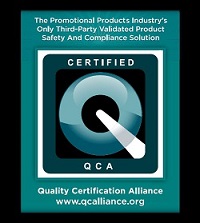The House Energy and Commerce consumer protection subcommittee sought answers in 15 areas from CPSC. Its letter (bit.ly/2SN2sZY) set a March 22 deadline for a response.
A separate press release (bit.ly/2XED8ZQ) framed the move as "long-overdue" and focused on whether CPSC's activities related to tipping dressers and inclined infant sleepers have been adequate. It also asserted, "CPSC has taken several actions that raise questions about its commitment to protecting consumers."
Briefly, issues included rulemakings and related activity (like petitions), voluntary standards, compliance, enforcement, recalls, data collection, information disclosure, staff vacancies/diversity, oversight responsiveness, and conflicts of interest.
Specifically, in order given, the letter sought:
- Tallies of pending "rulemakings, petitions, applications, complaints, requests, and other items." The letter included a table to give the tallies by five CPSC offices versus time running, ranging from under six months to over five years. Offices were compliance, general counsel, hazard identification, import surveillance, and international programs.
- Identification of each item tallied in that matrix as well as the time pending and who initiated it, including outsiders.
- Numbers of staffers and vacancies in the five listed offices in the table, including the titles for vacancies and lengths of time empty.
- SaferProduct.gov reports by year for FY2016-FY2019. This request included another table to drill down on the report by year versus 24 product categories that ranged across CPSC's jurisdiction, including some high-focus (like tipping furniture, portable generators, ATVs/ROVs and window coverings) and some less so (like hobby, packaging/containers, and gun locks/safes).
- Details on whether SaferProducts.gov reports were made public, including tallies by year of released versus not. The letter also seeks the reasons for each nondisclosure.
- Compliance activity for each of the four years: Numbers of open investigations by product category at January 1 of each (fiscal years begin October 1); numbers and types of investigations opened; numbers and types of investigations closed without enforcement action, including reasons why; numbers of recalls, including details on voluntary versus mandatory and whether or not Fast Track; tallies of enforcement action types such as civil penalties and "required compliance measures"; and details on open cases with deaths, including time since opened, numbers of deaths, affected populations, and hazard patterns.
- Voluntary standards activity for the four years, including issues getting attention, CPSC initiated-proposals, and agency testing or other work in support of revisions.
- Rulemakings initiated since Acting Chairman Ann Marie Buerkle took over the agency by type of action (ANPR vs. NPR, etc.); topic, various milestone dates from start to final rule; comment period length; and comment numbers.
- Rulemakings pending on January 20, 2017, including types, various milestone dates, comment period details, and reasons why any were not adopted.
- FoIA activity for each of the four years, including identities of requestors, topics, timings of milestones, details on release (full, partial, non), appeals, and fees assessed.
- Inquiries from Congress sent in the four years and still needing responses, including topics and dates sent.
- Civil penalty details in the four years for both those paid (companies, amounts, allegations) and those not (dates begun and how resolved or whether still pending).
- Ten largest recalls in each of the four years, including units recalled, remedies offered, and response rates.
- Conflict of interest recusals in each of the four years, identifying the people and reasons, as well as agency actions to ensure adequate policies and training.
- Staff diversity activity during the four years for both hiring and promotions.





.jpg)
